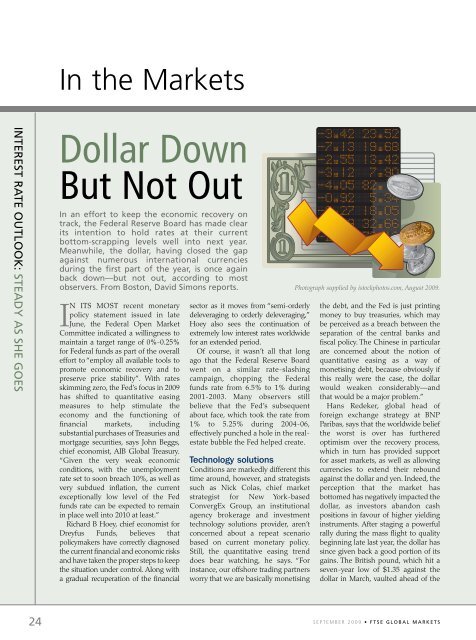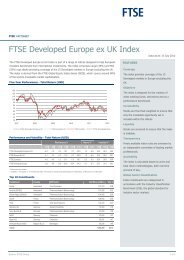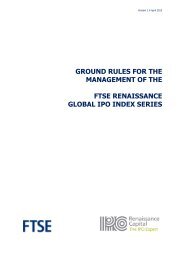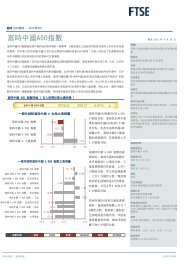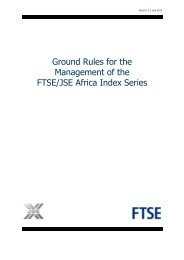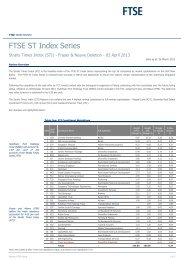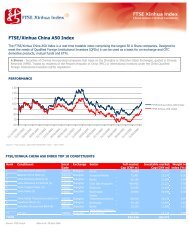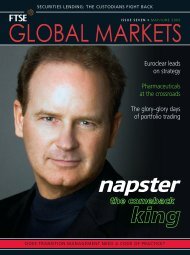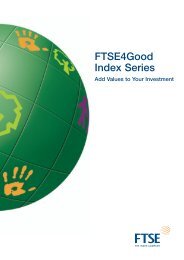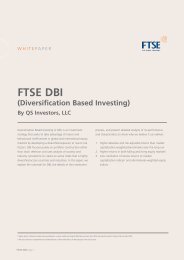Create successful ePaper yourself
Turn your PDF publications into a flip-book with our unique Google optimized e-Paper software.
INTEREST RATE OUTLOOK: STEADY AS SHE GOES<br />
24<br />
In the Markets<br />
Dollar Down<br />
But Not Out<br />
In an effort to keep the economic recovery on<br />
track, the Federal Reserve Board has made clear<br />
its intention to hold rates at their current<br />
bottom-scrapping levels well into next year.<br />
Meanwhile, the dollar, having closed the gap<br />
against numerous international currencies<br />
during the first part of the year, is once again<br />
back down—but not out, according to most<br />
observers. From Boston, David Simons reports.<br />
IN ITS MOST recent monetary<br />
policy statement issued in late<br />
June, the Federal Open Market<br />
Committee indicated a willingness to<br />
maintain a target range of 0%-0.25%<br />
for Federal funds as part of the overall<br />
effort to “employ all available tools to<br />
promote economic recovery and to<br />
preserve price stability”. With rates<br />
skimming zero, the Fed’s focus in 2009<br />
has shifted to quantitative easing<br />
measures to help stimulate the<br />
economy and the functioning of<br />
financial markets, including<br />
substantial purchases of Treasuries and<br />
mortgage securities, says John Beggs,<br />
chief economist, AIB Global Treasury.<br />
“Given the very weak economic<br />
conditions, with the unemployment<br />
rate set to soon breach 10%, as well as<br />
very subdued inflation, the current<br />
exceptionally low level of the Fed<br />
funds rate can be expected to remain<br />
in place well into 2010 at least.”<br />
Richard B Hoey, chief economist for<br />
Dreyfus Funds, believes that<br />
policymakers have correctly diagnosed<br />
the current financial and economic risks<br />
and have taken the proper steps to keep<br />
the situation under control. Along with<br />
a gradual recuperation of the financial<br />
sector as it moves from “semi-orderly<br />
deleveraging to orderly deleveraging,”<br />
Hoey also sees the continuation of<br />
extremely low interest rates worldwide<br />
for an extended period.<br />
Of course, it wasn’t all that long<br />
ago that the Federal Reserve Board<br />
went on a similar rate-slashing<br />
campaign, chopping the Federal<br />
funds rate from 6.5% to 1% during<br />
2001-2003. Many observers still<br />
believe that the Fed’s subsequent<br />
about face, which took the rate from<br />
1% to 5.25% during 2004-06,<br />
effectively punched a hole in the realestate<br />
bubble the Fed helped create.<br />
Technology solutions<br />
Conditions are markedly different this<br />
time around, however, and strategists<br />
such as Nick Colas, chief market<br />
strategist for New York-based<br />
ConvergEx Group, an institutional<br />
agency brokerage and investment<br />
technology solutions provider, aren’t<br />
concerned about a repeat scenario<br />
based on current monetary policy.<br />
Still, the quantitative easing trend<br />
does bear watching, he says. “For<br />
instance, our offshore trading partners<br />
worry that we are basically monetising<br />
Photograph supplied by istockphotos.com, August 2009.<br />
the debt, and the Fed is just printing<br />
money to buy treasuries, which may<br />
be perceived as a breach between the<br />
separation of the central banks and<br />
fiscal policy. The Chinese in particular<br />
are concerned about the notion of<br />
quantitative easing as a way of<br />
monetising debt, because obviously if<br />
this really were the case, the dollar<br />
would weaken considerably—and<br />
that would be a major problem.”<br />
Hans Redeker, global head of<br />
foreign exchange strategy at BNP<br />
Paribas, says that the worldwide belief<br />
the worst is over has furthered<br />
optimism over the recovery process,<br />
which in turn has provided support<br />
for asset markets, as well as allowing<br />
currencies to extend their rebound<br />
against the dollar and yen. Indeed, the<br />
perception that the market has<br />
bottomed has negatively impacted the<br />
dollar, as investors abandon cash<br />
positions in favour of higher yielding<br />
instruments. After staging a powerful<br />
rally during the mass flight to quality<br />
beginning late last year, the dollar has<br />
since given back a good portion of its<br />
gains. The British pound, which hit a<br />
seven-year low of $1.35 against the<br />
dollar in March, vaulted ahead of the<br />
S E P T E M B E R 2 0 0 9 • F T S E G L O B A L M A R K E T S


